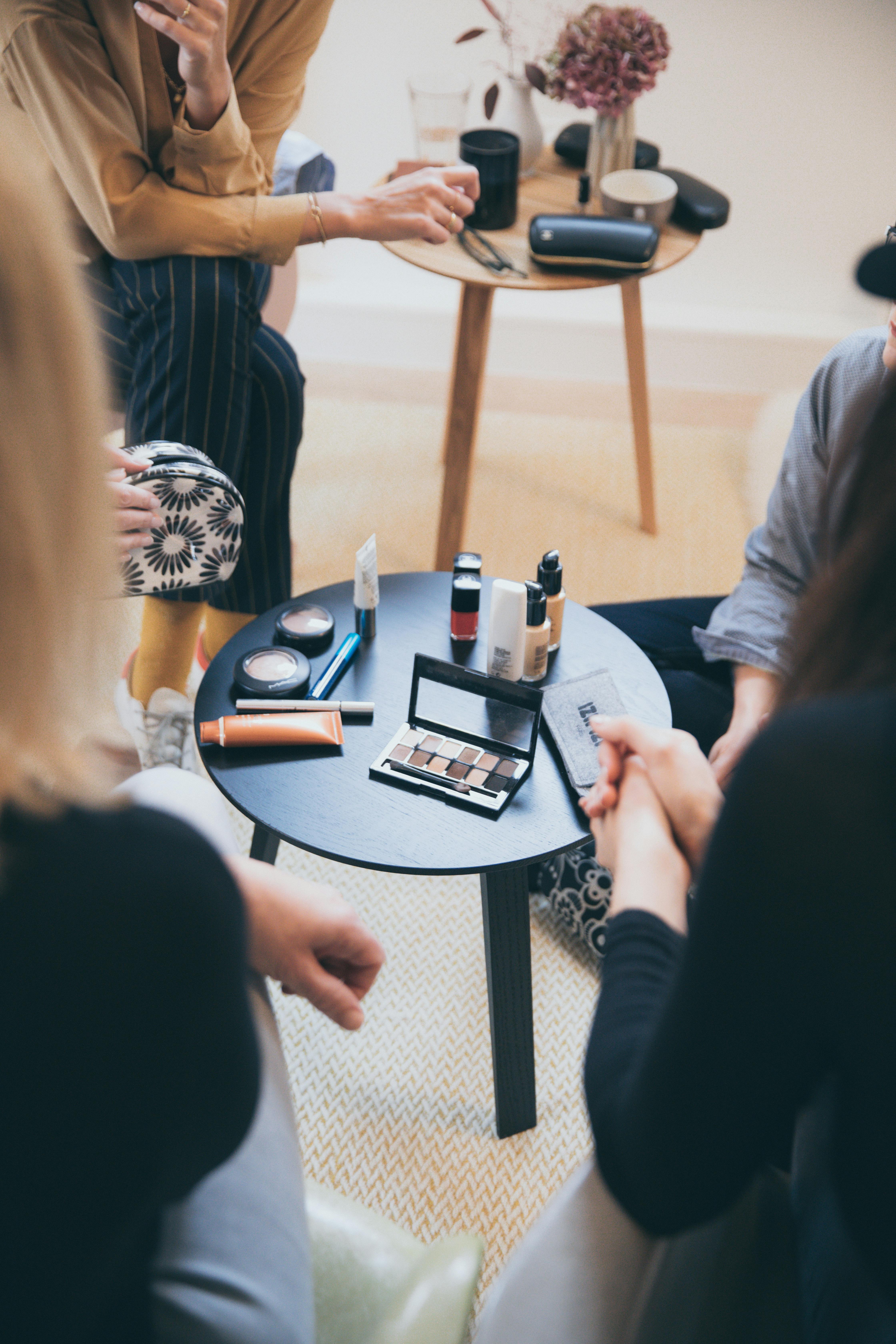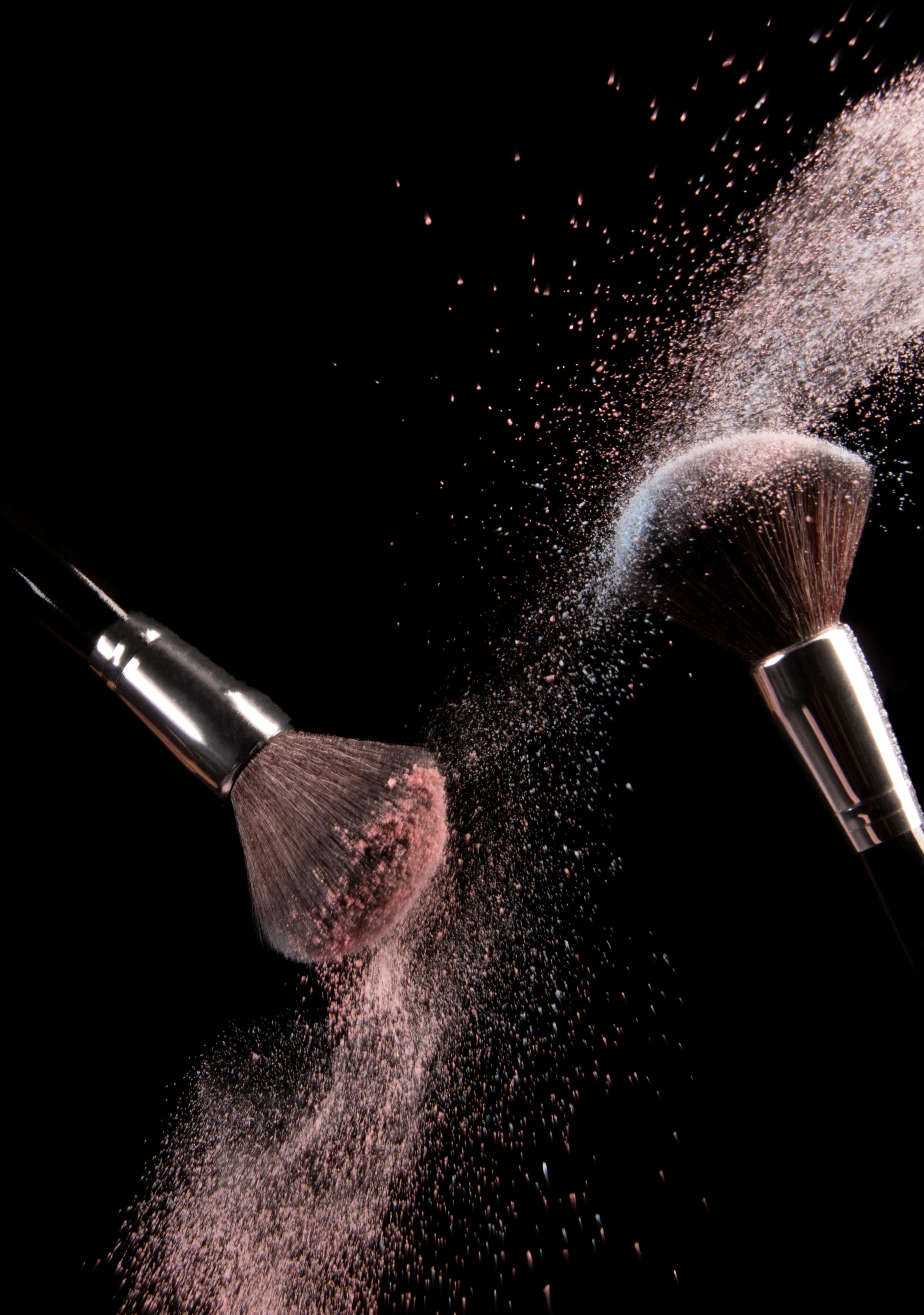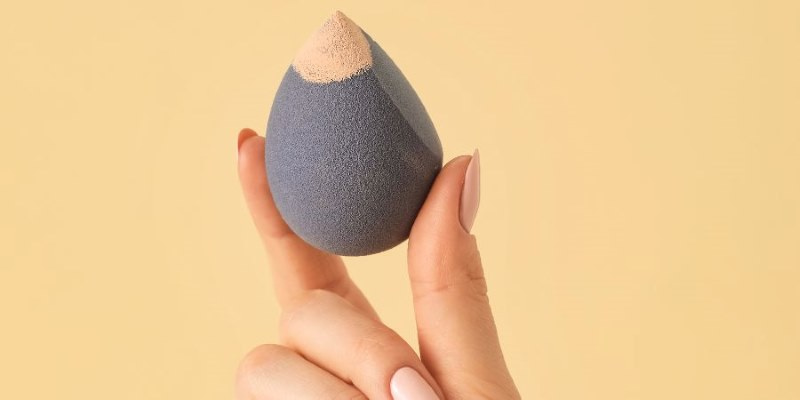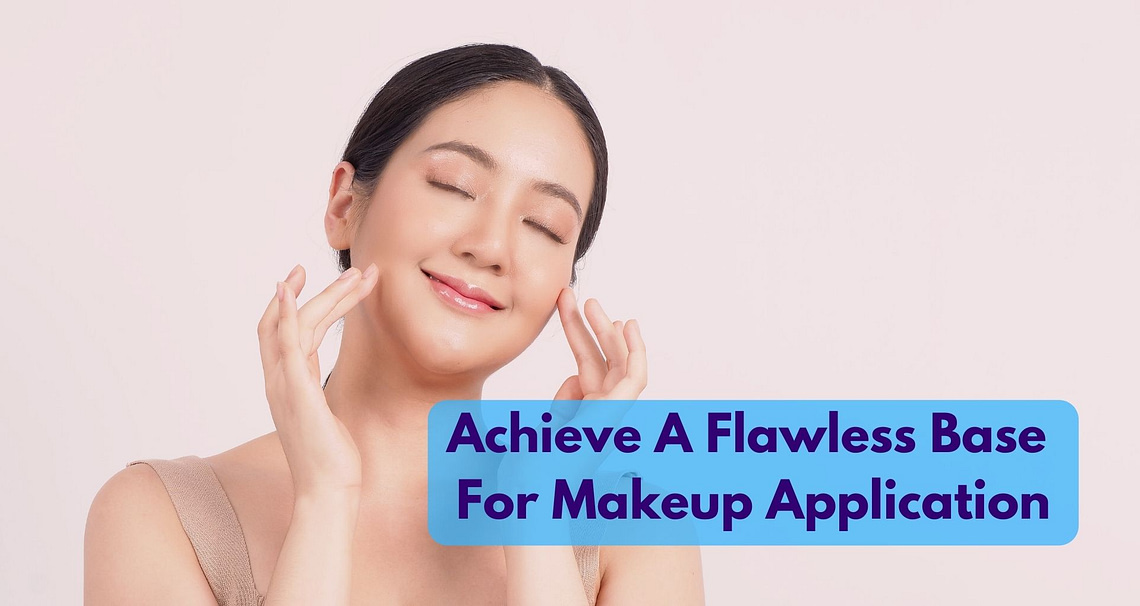Are you tired of struggling with achieving a flawless base for your makeup? Look no further! In this article, we will guide you through the steps to help you achieve a flawless base for your makeup application. From preparing your skin to choosing the right products, we’ve got you covered.
Say goodbye to cakey, uneven makeup and hello to a smooth, radiant complexion that will have heads turning. So, grab your makeup brushes and let’s get started on this journey towards a flawless base that will make you feel like a million bucks!
1. Understanding Your Skin Type
Determining your skin type
Before you start working on achieving a flawless base for your makeup, it’s important to understand your skin type. Knowing whether you have oily, dry, combination, or sensitive skin will help you choose the right products and techniques that suit your specific needs.
To determine your skin type, you can start by observing your skin’s natural behavior throughout the day. Does your skin feel oily and shiny? Does it feel dry and tight? Or is it a combination of both? Additionally, consider any specific skin concerns you may have, such as acne, rosacea, or aging.
Choosing products for your skin type
Once you have identified your skin type, it’s vital to select skincare products that cater to your specific needs. For oily skin, look for products that are oil-free and mattifying. Dry skin, on the other hand, requires hydrating and moisturizing products.
If you have combination skin, you’ll want to find products that balance both oily and dry areas. Sensitive skin requires gentle, fragrance-free, and hypoallergenic products that won’t cause irritation.
Remember, each skin type is unique, so take the time to research and experiment with different products to find the ones that work best for you. Consider consulting with a dermatologist or skincare professional for personalized recommendations.
2. Skincare Routine
Cleansing your face
A crucial step in achieving a flawless base is starting with a clean canvas. Begin your skincare routine by thoroughly cleansing your face. Use a gentle cleanser that suits your skin type to remove any dirt, oil, and impurities. Cleansing helps prevent clogged pores, which can lead to breakouts and uneven makeup application.
Exfoliating your skin
Exfoliation is an essential step to achieve a smoother and more even skin texture. It helps remove dead skin cells, unclog pores, and promote cell turnover. Choose a gentle exfoliator that suits your skin type and exfoliate your skin once or twice a week. Avoid over-exfoliating, as it can irritate your skin and cause redness.
Moisturizing your skin
To ensure a smooth and hydrated base for your makeup, don’t skip the moisturizer. Hydrated skin allows makeup to blend seamlessly and prevents a cakey appearance. Choose a moisturizer that suits your skin type and apply it evenly to your face and neck. Allow it to absorb before moving on to the next step.
Applying sunscreen
Before you dive into the world of makeup application, always prioritize sun protection. Apply a broad-spectrum sunscreen with an SPF of 30 or higher to shield your skin from harmful UV rays. Sunscreen not only helps prevent sunburn and premature aging but also creates a protective barrier for your flawless base.

This image is property of images.pexels.com.
3. Prepping Your Skin
Using a primer
Priming your skin is an essential step to achieve a flawless base for your makeup. Primers create a smooth surface, blur imperfections, and help makeup last longer. Select a primer that suits your skin type and concerns. For example, if you have oily skin, opt for a mattifying primer, while a hydrating primer works well for dry skin.
After moisturizing, apply a thin layer of primer evenly to your face. Focus on areas where you tend to have larger pores or uneven texture. Allow the primer to set for a few minutes before moving on to the next step.
Color correcting
It is a technique used to neutralize specific skin concerns, such as redness, dark circles, or discoloration. Color correctors come in various shades, each targeting a specific concern. For example, green corrects redness, peach corrects dark circles, and lavender corrects dullness.
To color correct, choose the appropriate shade for your concern and apply it sparingly to the specific areas. Gently blend it into your skin using a clean brush or your fingertips. Remember to use a light hand, as excessive color correcting can result in an unnatural finish.
Concealing imperfections
Once you’ve color corrected, it’s time to conceal any remaining imperfections. Choose a concealer that matches your skin tone or is slightly lighter for brightening effect. Using a small brush or your fingertips, apply the concealer to areas with blemishes, dark spots, or under-eye circles.
Blend the concealer by gently patting or dabbing it using a tapping motion. Avoid rubbing or dragging as it can disturb the color correcting and may make the imperfections more noticeable. Set the concealer with a light dusting of setting powder for long-lasting coverage.
4. Foundation Application
Choosing the right shade
Finding the perfect foundation shade can be a daunting task, but it’s essential for achieving a flawless base. When selecting a foundation, consider both your skin undertone and shade. Undertones can be warm, cool, or neutral, and they determine the underlying color of your skin.
To determine your undertone, look at the veins in your wrist. If they appear green, you likely have warm undertones, while blue veins indicate cool undertones. If you can’t distinguish between green and blue veins or have a mix, you likely have a neutral undertone.
Once you identify your undertone, test multiple foundation shades on your jawline or wrist to find the one that blends seamlessly with your skin. Natural lighting is best for accurate color matching.
Blending techniques
Regardless of the tool you use, blending is key to achieving a natural and flawless foundation application. There are various blending techniques, such as using brushes, sponges, or even your fingers. The choice depends on personal preference and the finish you desire.
For brushes, opt for a dense, synthetic foundation brush or a stippling brush for an airbrushed finish. Apply the foundation in small dots or streaks and blend it out using circular or buffing motions.
If you prefer a sponge, dampen it with water or a setting spray, squeeze out the excess moisture, and gently bounce the sponge over your skin. This technique helps achieve a seamless, natural-looking finish.
Remember, regardless of the tool, blend your foundation well along your jawline, hairline, and neck to avoid any visible lines or harsh edges.
Applying with a brush
To apply foundation with a brush, start by putting a small amount of foundation on the back of your hand. Dip the bristles of the brush into the foundation and start applying it to your face with gentle strokes.
Begin in the center of your face, such as the forehead, nose, and chin, and work your way outward. Use circular or sweeping motions to evenly distribute the foundation. Make sure to blend the foundation seamlessly into your skin, focusing on areas that may require more coverage.
Applying with a sponge
To apply foundation with a sponge, dampen it with water or a setting spray. Squeeze out any excess moisture, as a damp sponge works best for a flawless finish. Using the rounded side of the sponge, dab the foundation onto your face, starting from the center and blending outward.
Gently bounce the sponge against your skin to ensure even coverage. If you prefer lighter coverage, use a light touch. For more buildable coverage, layer the foundation by repeating the bouncing motion.

This image is property of images.pexels.com.
5. Setting Your Base
Using setting powder
To set your flawless base and ensure longevity, reach for a setting powder. Setting powders help mattify the skin, reduce shine, and enhance the longevity of your makeup.
Using a fluffy powder brush, lightly dust the setting powder over your entire face, focusing on areas prone to oiliness or creasing. Remember to use a light hand and tap off any excess powder to avoid a cakey appearance.
Applying setting spray
After setting your base with powder, lock it in place with a setting spray. Setting sprays provide hydration, melt the powders into the skin, and prolong the wear of your makeup. Hold the setting spray an arm’s length away from your face and mist it evenly over your entire face.
Allow the setting spray to dry naturally, and avoid touching or rubbing your face until it sets. This final step helps seal your flawless base, leaving you with a long-lasting and natural-looking result.
6. Contouring and Highlighting
Defining your features with contour
Contouring is a technique that helps create dimension and definition to your face. It involves using a matte bronzer or contour powder to create shadows and sculpt your features. To contour, choose a shade that is two to three shades darker than your natural skin tone.
Using a contour brush or angled brush, apply the contour powder or bronzer along the hollows of your cheeks, temples, jawline, and sides of your nose. Blend it well to create a seamless and natural-looking shadow. Remember to start with a light hand and build up the intensity gradually to avoid any harsh lines.
Adding glow with highlighter
Highlighter is the key to achieving a healthy and radiant glow. It helps bring dimension to your face by catching and reflecting light. Choose a highlighter shade that complements your skin tone and offers a natural-looking shimmer.
Using a fan brush or a small fluffy brush, apply the highlighter to the high points of your face. These areas include the tops of your cheekbones, the bridge of your nose, the cupid’s bow, and the brow bone. Sweep the brush lightly over these areas to add a subtle glow. Remember, less is more when it comes to highlighter, as a little goes a long way.
Also Check: How To Prevent Breakouts And Promote Clear Skin?
7. Applying Other Face Makeup
Blush application
Blush adds a healthy flush of color to your cheeks and enhances the overall natural look of your makeup. Choose a blush shade that complements your skin tone and suits your desired intensity, whether it be a soft flush or a bolder pop of color.
Using a blush brush, dip it lightly into the blush powder or cream and tap off any excess. Smile to locate the apples of your cheeks and apply the blush in a gentle sweeping or circular motion. Blend it well to achieve a seamless and natural appearance.
Bronzer application
Bronzer adds warmth and a sun-kissed glow to your face. Choose a shade that is a few shades darker than your natural skin tone for a believable and natural look.
Using a large powder brush, gently swirl it into the bronzer and tap off any excess. Apply the bronzer to areas where the sun naturally hits your face, such as the temples, top of the forehead, hollows of the cheeks, and jawline. Blend it well to avoid any harsh lines and achieve a smooth, bronzed complexion.
8. Eye Makeup Application
Eyeshadow application
Eyeshadow adds depth and drama to your eyes, enhancing the overall makeup look. Start by applying an eyeshadow primer to ensure longevity and prevent creasing.
Choose eyeshadow colors that complement your skin tone and desired look. Using an eyeshadow brush, apply a light base color across your entire eyelid. Then, use a slightly darker shade in the crease to create dimension. Blend the colors well to create a seamless transition.
For added depth and dimension, apply a darker shade to the outer corner of your eye and blend it toward the center. Finish by highlighting the inner corner of your eye and brow bone with a lighter shade.
Eyeliner application
Eyeliner helps define and enhance the shape of your eyes. Choose between a pencil, liquid, or gel eyeliner, depending on your preference and skill level. Remember to select a shade that suits your desired intensity and eye color.
Starting from the inner corner, apply the eyeliner close to the lash line, gradually thickening the line as you move toward the outer corner. For a more precise and winged look, use a small brush or a liner pen.
Mascara application
Mascara adds volume, length, and drama to your lashes, making your eyes stand out. Before applying mascara, curl your lashes gently using an eyelash curler for an extra lift.
Choose a mascara that suits your lashes and desired look, whether it be volumizing, lengthening, or curling. Starting at the base of your lashes, wiggle the wand back and forth while moving upward. This technique helps coat each lash for a fuller look. Apply multiple coats if desired, allowing each coat to dry before applying the next.

9. Lipstick Application
Prepping your lips
Achieving a flawless base includes prepping your lips for lipstick application. Start by exfoliating your lips using a gentle lip scrub or a soft toothbrush to remove any dry or flaky skin. Follow up with a hydrating lip balm to moisturize and soften your lips.
Choosing the right shade
When selecting a lipstick shade, consider your skin tone and the desired look you want to achieve. Experiment with various shades and finishes to find the ones that flatter your complexion and suit the occasion.
Applying lipstick
To apply lipstick evenly and precisely, start by using a lip liner that matches your lipstick shade or is slightly darker. Outline your lips to define their shape and prevent smudging.
Next, apply the lipstick directly from the tube or use a lip brush for more precision. Begin applying from the center of your lips, following the natural curves of your mouth. Fill in the rest of your lips, making sure to reach the corners.
For a longer-lasting application, blot your lips with a tissue and reapply another layer of lipstick. This technique helps build color intensity and ensures a more vibrant and polished look.
FAQs
How long does it take to achieve a flawless base?
The time required to achieve a flawless base varies depending on your experience, the complexity of your makeup routine, and the preparation involved. On average, it can take anywhere from 15 to 30 minutes or more. However, with practice and a streamlined routine, you can gradually reduce the time needed to achieve your desired look.
Can I skip the primer step?
While it’s not mandatory, using a primer can significantly enhance the longevity and appearance of your makeup. Primers create a smooth canvas, minimize the appearance of pores, and help makeup adhere better to your skin. If you want your makeup to last longer with a smooth finish, it’s recommended to include a primer in your routine.
What are some common mistakes to avoid?
To achieve a flawless base, it’s important to avoid common makeup application mistakes. Some common errors to avoid include applying too much foundation, neglecting skincare, using the wrong shade of foundation, forgetting to blend, and skipping important steps like setting your base with powder and setting spray. Remember to practice a light hand and take your time to blend and layer products for a natural and flawless finish.





